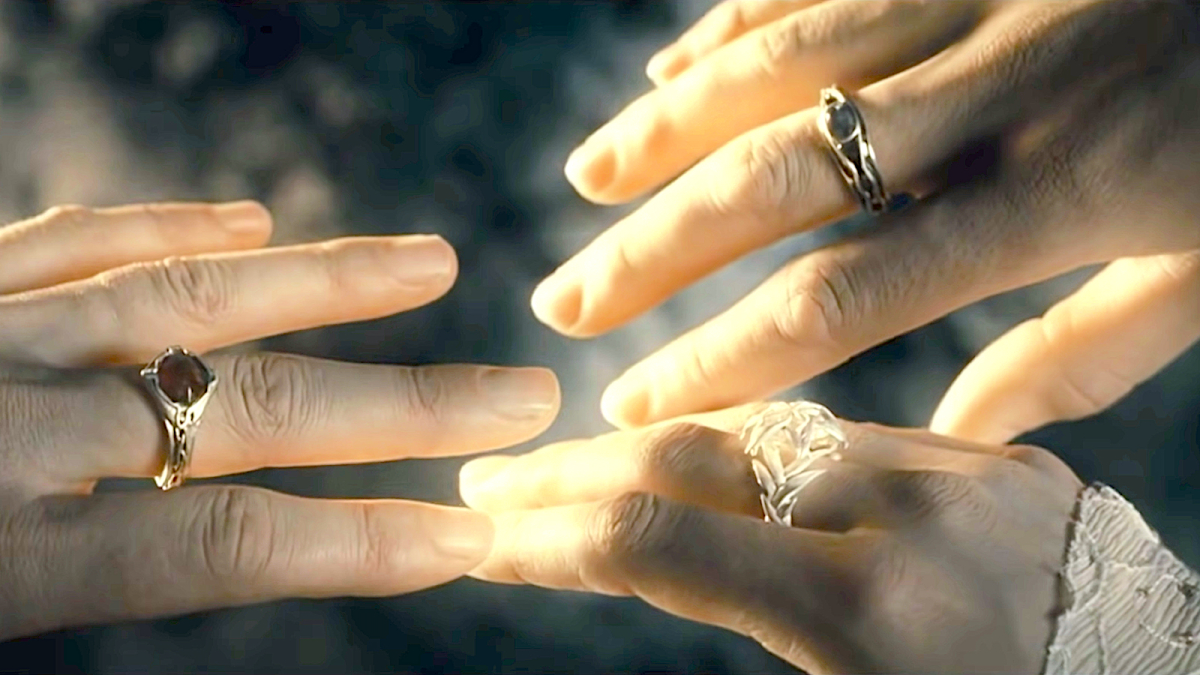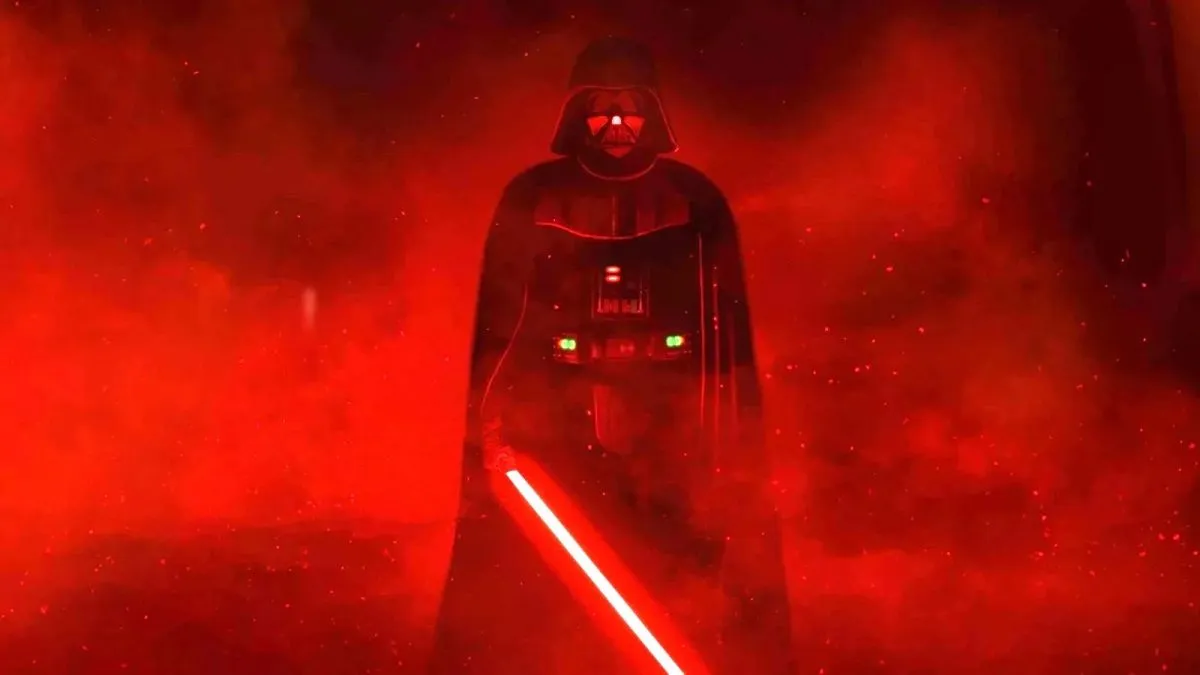Folks, we’re only a few months away from a return to Middle-earth after eight years of somehow living without it.
The final film in the Hobbit trilogy came out in 2014, leaving us without any fresh Lord of the Rings content for nearly a decade. Now that our dry spell is nearing an end, fans of the franchise are revisiting the lore, taking the time to ask questions about even the most obscure of details, and discovering just how deep J.R.R. Tolkien’s world really goes.
The brilliant mind behind the Lord of the Rings novels crafted a world that feels so real, you can touch it, and then he kept going. He created mostly functioning languages for multiple races, and with their own various dialects, no less. He crafted characters based on his own life experiences and wove himself and his life into every word he put on paper. His stories are immensely rich and offer far more than the one we’ve all become so familiar with.
Still, the Rings of Power at the core of the Lord of the Rings and Hobbit trilogies maintain a surprising amount of mystery. Despite their presence at the core of pretty much every story told in Middle-earth, they remain enigmatic and somewhat mystifying to most viewers, many of whom are primarily aware of the titular One Ring. The One Ring actually has quite a few powerful cousins, each of which was created in the years before Sauron attempted to seize control over Middle-earth.
Who has possession of the Rings of Power?
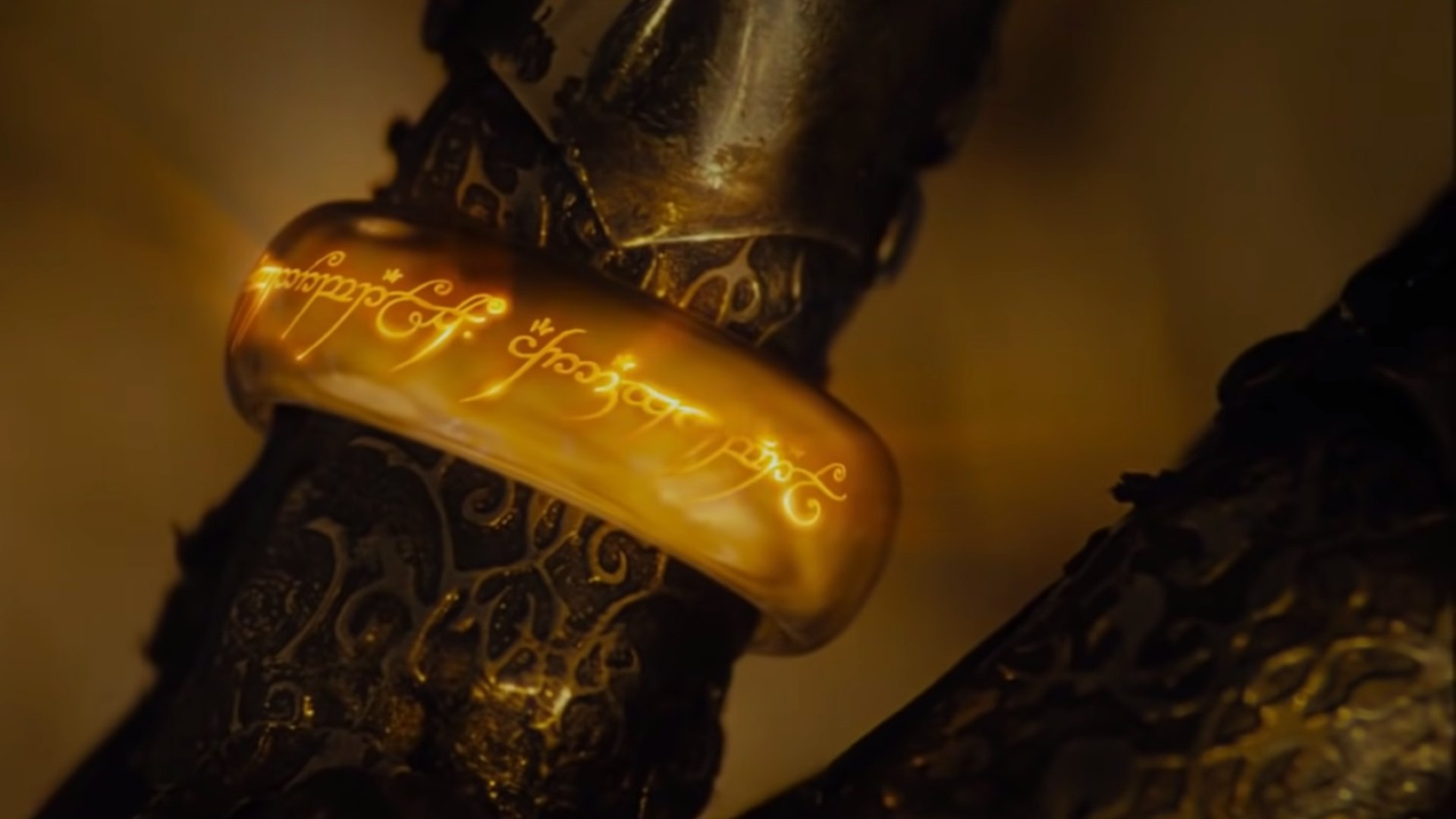
In total, 20 Rings of Power were created in the Second Age of Middle-earth. They were dispersed between Elves, Dwarves, and Men, with one final ring — the One Ring — crafted in secret by Sauron. Most of the Rings of Power continue to exist somewhere in Middle-earth despite many disappearing from history a very long time ago.
The Elven Rings
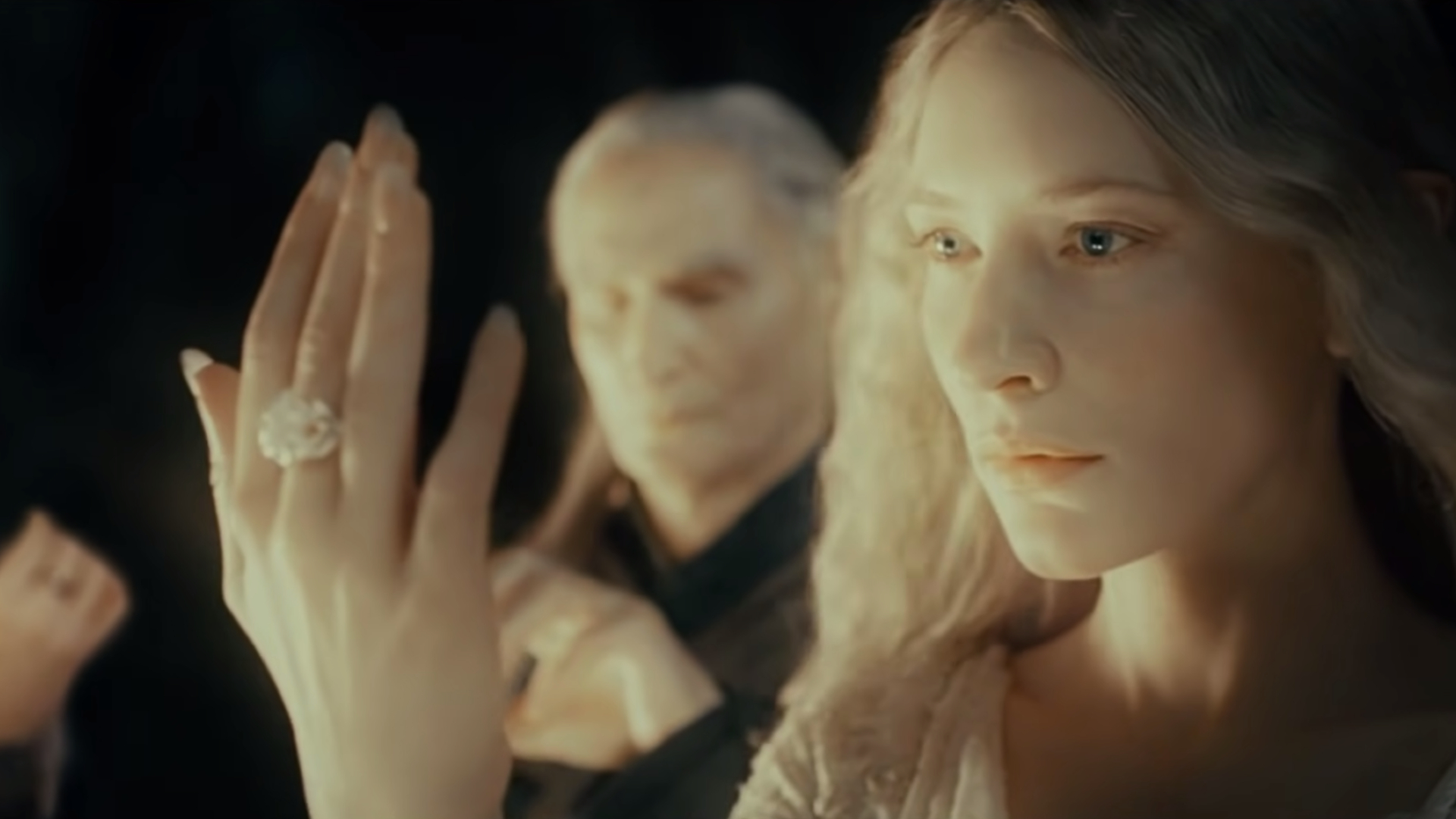
Sauron assisted the Elves of Eregion in the creation of the Greater 16 Rings, imbuing them all with a connection back to him. He did not assist in the creation of the three Elven Rings, however, as they were crafted following his departure from Eregion.
One of the Elven Rings remains in the possession of the same person it was originally gifted to thanks to the extraordinarily long lives of Elves. Galadriel, lady of the woods of Lothlórien, holds Nenya, also known as the “Ring of Adamant” or the “Ring of Water.”
The most powerful of the Elven Rings, Vilya, was sent to the High King of the Noldor, Gil-galad. This ring is known by a number of names, including the “Ring of Sapphire” and the “Blue Ring.” It also goes by its lesser-known title, the “Ring of Air.” Vilya was eventually passed to Lord Elrond of Rivendell, who wielded it through the latter half of the Second Age and through all of the Third Age. It ultimately travelled with him to the Grey Haven.
The final Elven Ring is known as Narya, or the “Ring of Fire.” It was given to Gil-galad for protection following Sauron’s rise, and he eventually passed it to his lieutenant, Círdan. Círdan, Lord of the Havens of Mithlond, held on to the ring for millennia, keeping it in his care long after Gil-galad’s death. The ring was eventually passed on to Gandalf in the Third Age in hopes of lending aid to his efforts. He is seen wearing the ring at the Battle of Minas Tirith, and it is thought to be a factor in his ability to inspire hope and courage into the men he led and also potentially contributed to his mastery over fire.
The Dwarven Rings
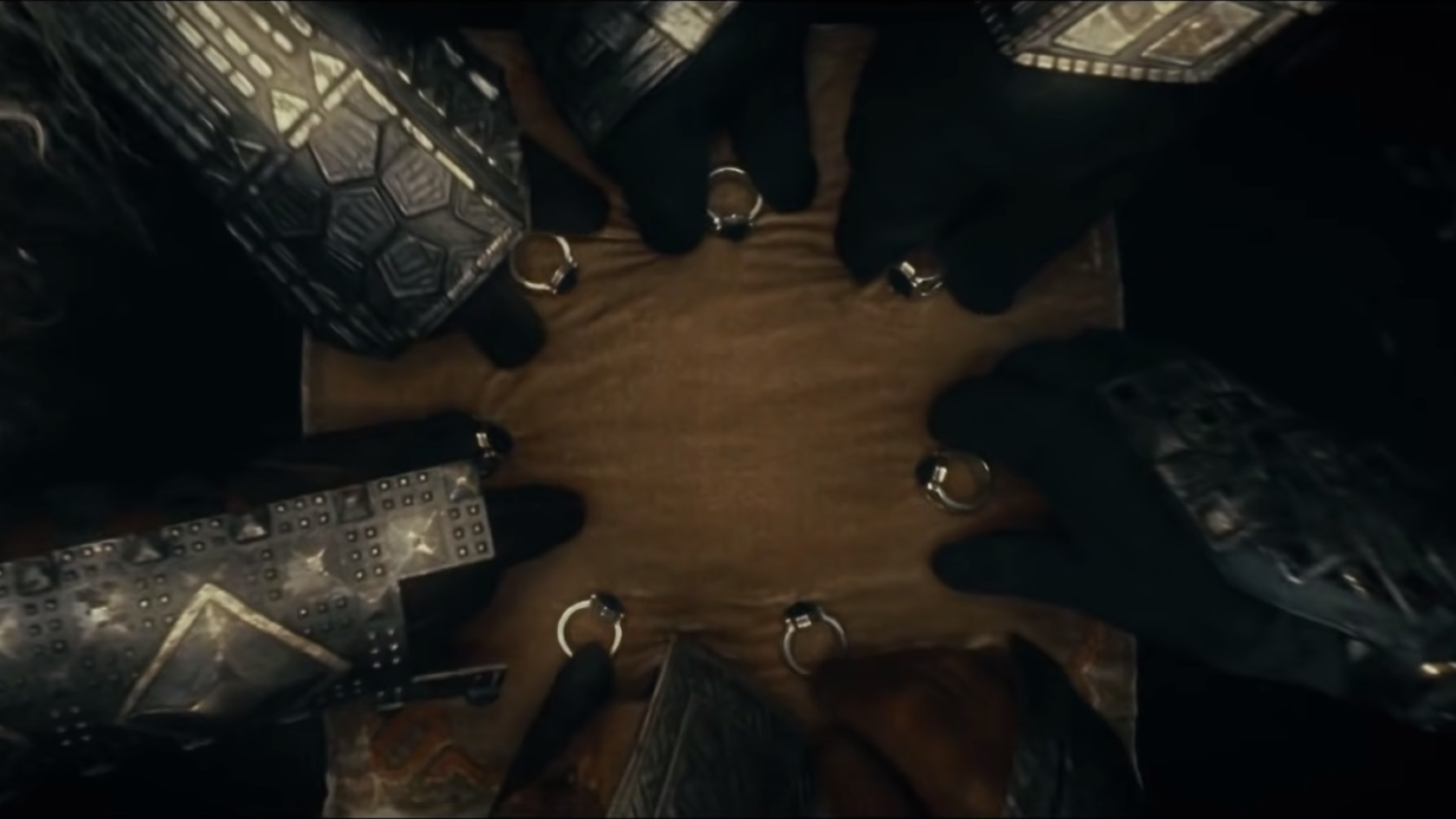
Crafted by the Elves of Eregion with Sauron’s aid, seven rings in total were gifted to the great Dwarven Kings. Under the guise of Annatar, Sauron presented the rings to the Dwarves, who took them readily. He was unable to wield complete control over the Dwarven Ring-bearers, however, due to their stubborn nature and natural resilience.
The Dwarves, able to resist Sauron’s attempts at corruption, instead wielded the rings as a means of enhancing their wealth. The power of the rings aided them greatly in creating the Seven Hoards, but also amplified their greed and desire for power. The histories of the Dwarven Rings are far less known than those of the Elves’, but one ring is better known than the others. The Ring of Thrór, or Angya, was given to the King of Durin’s Folk, Durin III, before Eregion fell to Sauron’s forces. It remained in the House of Durin for thousands of years.
The ring passed through the lines of Durin, twisting the minds of its masters and exerting what control it could until it reached Thráin, father of Thorin Oakenshield. Thráin’s obsession with the wealth contained in Erebor is considered at least partially due to the ring’s influence, as was his father’s. The Ring of Thrór was eventually reclaimed by Sauron after he captured Thráin and relieved him of his powerful burden.
The other Dwarven Rings were dispersed among the other great Dwarven Houses and aided them in attaining great wealth. The history of two is mostly unknown, but four were swallowed by dragons. According to lore established in Lord of the Rings Online, those four dragons were eventually captured by Sauron. He managed to retrieve each of the captured rings — Tínya, Tulcya, Úrya, and Vanya — and reclaimed their power. The last two rings, Taurya and Sindya, also eventually returned to Sauron’s hands, but their journeys beforehand are vague.
The Nine Rings
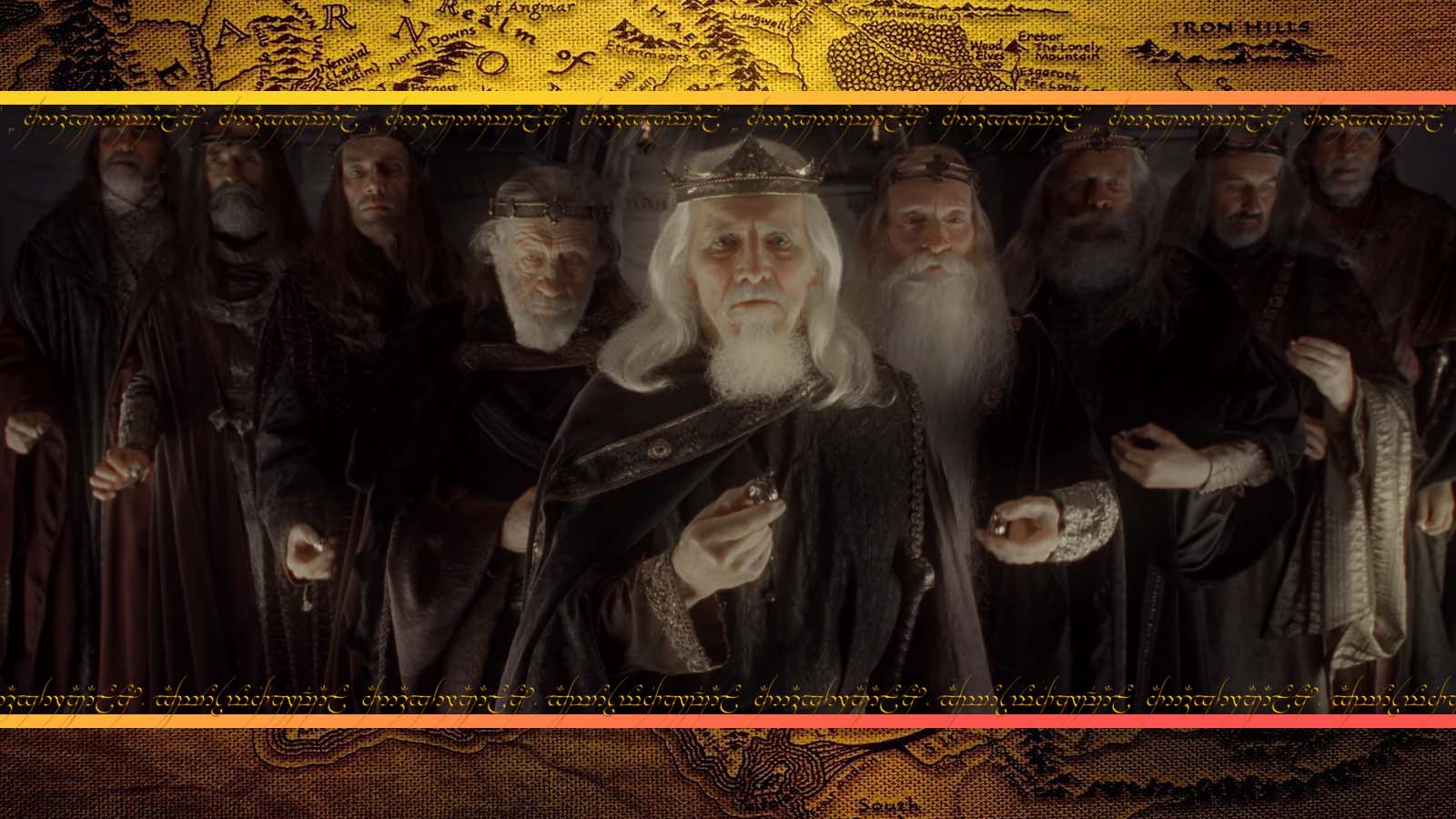
The final Nine Rings were crafted alongside the Dwarven Rings with Sauron’s influence. He stole these rings from the safes of Eregion when he fled and used them as a tool to warp the minds of nine powerful human kings. They gave their wearers the power to influence the wills of their peers and also granted long life, but they came with side effects. They quickly corrupted the minds of their bearers and eventually leeched their lives away, turning them into wraiths.
Not all of the human Ring-bearers’ identities are known, but a few names have stood the test of time. Adâsh, or “the Foe-maker,” was gifted to the Lieutenant of Dol GuldurI, and Orôm, “the Warmonger,” and Sâkhla, “the Cruel One,” were given to two unnamed Easterling rulers.
The next three rings ⏤ Jûru, “the Herald of Mourning,” Mêbat, “the Mirth-eater,” and Khânto, “the Pain-giver,” ⏤ were given to Men of Harad. The Haradrim allied with Sauron during both Sauron’s campaign against the Elves and the War of the Ring. Some eventually turned against him, but his early allies were rewarded with possession of several Rings of Power.
The final three rings were given to Númenóreans. Sapthân, “the Foolstone,” Nitîr, “Terror’s Sting,” and Ûri, “the Heart-stopper,” were all passed to Númenóreans, but only one of these unnamed kings made a name for himself after falling to Sauron. The Witch King of Angmar is almost certainly one of the Númenóreans who inherited a ring, likely Ûri. He was the most powerful of the Nazgûl, eventually becoming their leader and one of Sauron’s most feared captains.
The One Ring
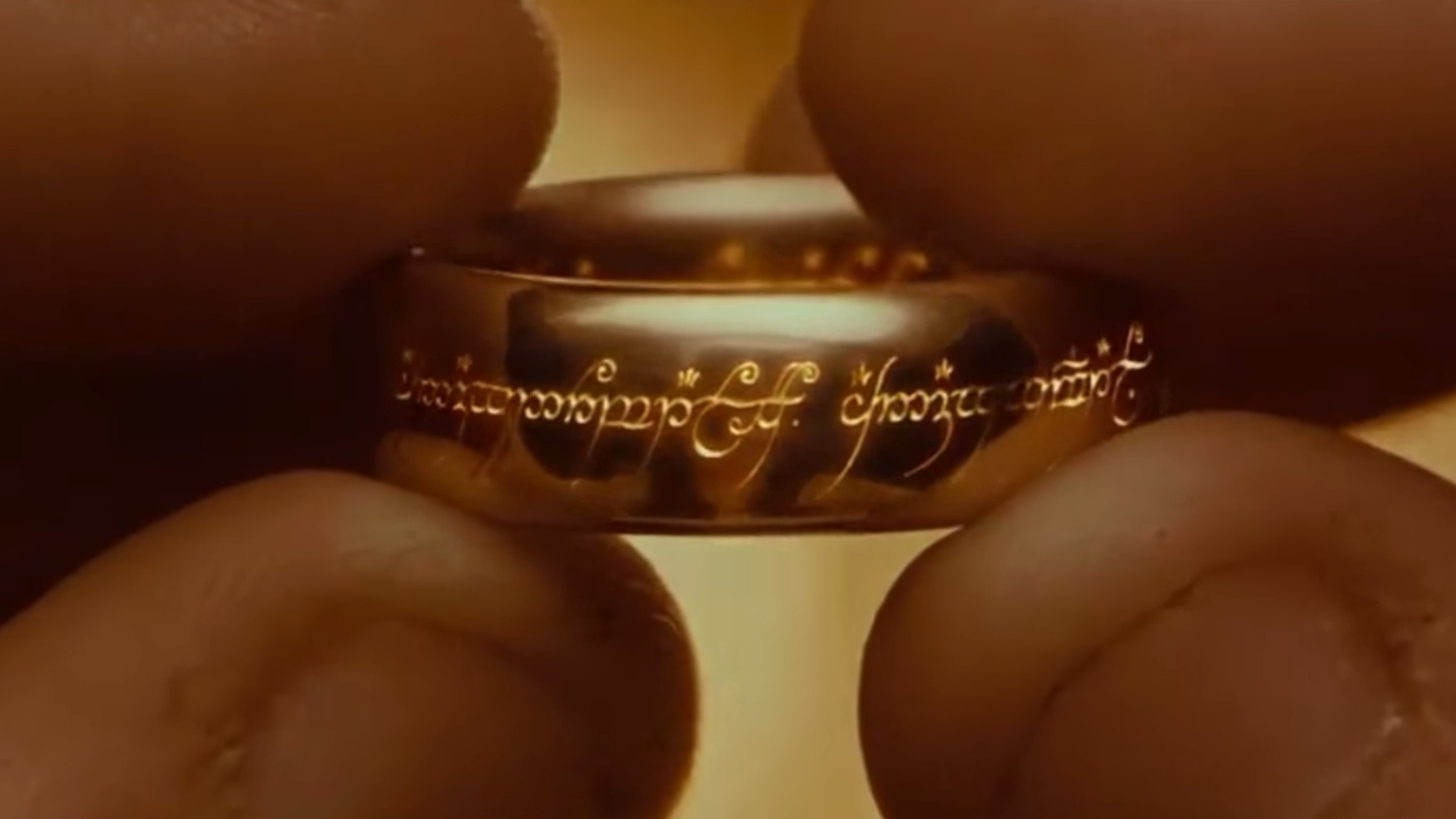
It doesn’t really seem necessary to reiterate this point, but there is one more ring. The One Ring, created by Sauron in the fires of Mount Doom, was created after all the other rings were completed. Sauron forged the ring in solitude, pouring much of his own power into it in an effort to make it strong enough to command the other rings. It goes by many names, including the Ruling Ring, Great Ring of Power, and Isildur’s Bane. Its original name is in Black Speech, however, and identifies it Ash Nazg.
The One Ring was made with the sole purpose of control. It was forged to help Sauron claim dominion of all the peoples of Middle-earth and to dominate the bearers of the other rings. It was largely successful in this, though the Elves — aware of Sauron’s schemes — refused to wear their rings and be controlled by him.

